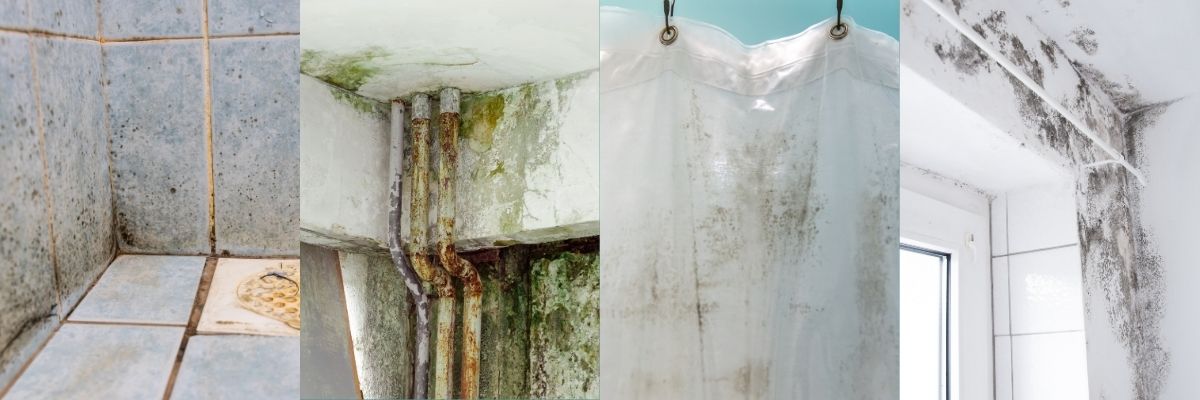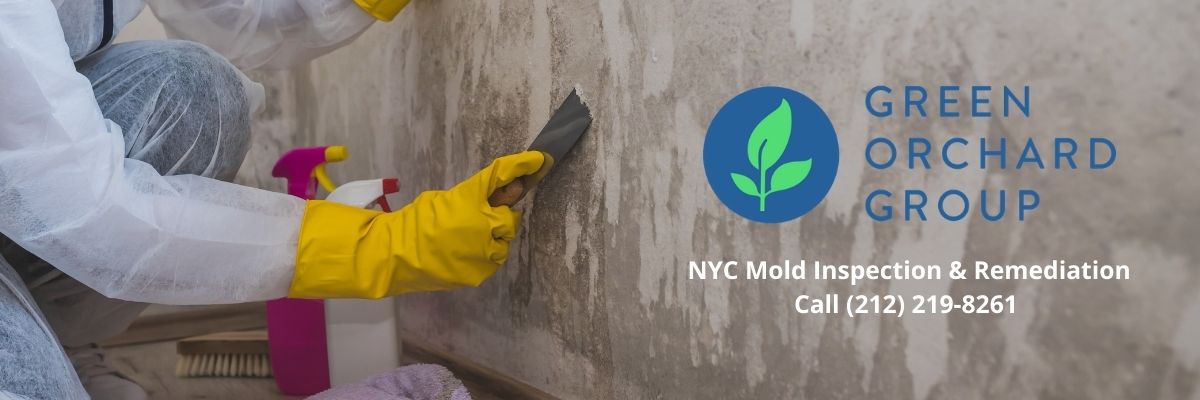Mold and mildew are common problems for renters and homeowners.
If you’ve recently discovered something unpleasant growing on the walls of your home or apartment, you’re probably wondering if it’s mold or mildew and what you should do about it.
What’s the Difference Between Mold and Mildew?
Mold and mildew share many physical similarities, but the consequences of the two differ. Mildew is relatively harmless to people and is typically just a household nuisance that requires a bit of cleaning. Mold is often a more severe problem and can pose a significant danger to your health and your property.
Both mold and mildew are terms that refer to species of fungus that grow in the form of multicellular filaments called hyphae. They thrive in warm, dark environments with lots of moisture and can grow on many different types of surfaces under the right conditions. In fact, according to the EPA, mildew is actually a subtype of early-stage mold that tends to grow on flat surfaces.
The health risks caused by mold and mildew mainly come from exposure to the spores through touch and inhalation. Many of the symptoms are similar, although the severity is usually greater when caused by mold. These health problems also tend to worsen over time, so it’s important to remove the source of the mold or mildew as soon as possible.
Symptoms of Mold and Mildew Exposure Include:
- Allergies and asthma
- Respiratory problems
- Coughing and sneezing
- Throat irritation
- Eye irritation
- Headaches
Certain species of toxic mold exist, although they are not common. The most well-known and dangerous example is black mold, or Stachybotrys, which can cause flu-like symptoms, diarrhea, lung damage, and even memory loss.
Another major consequence of mold is structural damage to your home. When allowed to grow unchecked, mold will destroy wood and other organic materials, causing permanent damage to your walls, floors, and ceilings. In contrast, mildew is mostly harmless to the structures and surfaces that it grows on.
It’s important to understand the main differences between mold and mildew so you can recognize which one you’re dealing with and how to take appropriate action. While mildew often only requires a good cleaning to get rid of, mold is best left to professionals to properly inspect and remediate. Here are 6 things to look out for to help you tell the difference.

How Can You Tell if You Have Mold or Mildew?
#1. Where Did You Find It?
- Mildew commonly grows on flat surfaces in areas that regularly get a lot of moisture, such as sinks, windowsills, and tiles in kitchens and bathrooms.
- Mold can grow on any organic surface as long as there’s enough moisture and oxygen, such as wood, drywall, and insulation, carpets, and fabric. It’s often found near leaks or standing water.
#2. What Color Is It?
- Mildew is most often white or grey, although it can also sometimes be found in darker shades.
- Mold can be any color, but the most common ones are black and green. It can also be brown, blue, purple, yellow, red, white, or even a combination of multiple colors.
#3. What Does the Texture Look Like?
- Mildew tends to appear as thin layers of powdery or fluffy patches on smooth, flat surfaces.
- Mold can appear either fuzzy or slimy in texture, depending on the conditions and the species of mold.
#4. Does It Smell?
- Mildew typically has a mild but distinctive odor often described as resembling “wet socks”.
- Mold has stronger odors that may smell musty, earthy, or stale, caused by the release of microbial volatile organic compounds (MVOC).
#5. Can It Be Scrubbed Off?
- Mildew only grows superficially on top of surfaces and can be scrubbed off relatively easily with a brush and some household bleach or vinegar.
- Mold tends to penetrate into the materials it grows on. It often causes the surface to become soft or crumbly, and cannot be simply cleaned off.
#6. The Bleach Test
To test for mold and mildew, apply a few drops of bleach onto the affected area and then wait a few minutes.
- If the area lightens up or disappears, it’s likely mildew.
- If the area remains dark or unchanged, it’s likely mold.
What To Do if You Have Mildew
Mildew is not as dangerous as mold, and in most cases, you can get rid yourself of it by cleaning it off.
Wear rubber gloves and eye protection for safety, and mix a solution of one part bleach to three parts water. Apply the cleaning solution to a small area, scrub it with a stiff brush, then rinse and repeat until all of the mildew is gone.
What To Do if You Have Mold
Due to the potential health risks associated with mold, it’s usually recommended to leave it to professionals. If the size of the mold covers an area greater than 10 square feet, you should hire a licensed mold company to assess and remediate the situation.
If you live in a residential building in New York with 10 or more units, state law requires the landlord to hire an NYS-licensed mold assessment company to identify the mold and determine the underlying cause. After the mold assessment is complete, another NYS-licensed mold remediation company must be hired to plan and perform the remediation work to remove the mold.
If the total area of the mold is less than 10 square feet, or in a private home or building with less than 10 units, you may choose to fix the mold issue yourself using safe work practices. However, this is not recommended unless you have a lot of experience dealing with mold. Improper remediation of mold can lead to further damage as well as put your own health and safety at risk.
Get Help From NYC’s Mold Inspection & Remediation Experts
If you have questions or concerns about mold in your apartment, home, or building, contact Green Orchard Group today!
We have over 25 years of experience as leaders in environmental health and safety. We provide licensed and reliable mold inspection and remediation services in New York City and the surrounding areas. Mold can be a stressful situation, but our experts will work with you to identify the cause and remove the danger.
Call (212) 219-8261 or contact us below for a free consultation and quote.


